.jpg)
.jpg)
.jpg)
Key Takeaways:
- Skirting is an important aspect of homes, providing various benefits such as protecting walls from damage, improving insulation, and enhancing the overall aesthetics.
- Concrete skirting offers advantages like durability, resistance to pests and weather conditions, and easy installation process.
- Brick skirting has both pros and cons, with benefits including a classic and timeless look, but drawbacks such as higher maintenance requirements and potential vulnerability to moisture.
- Cinder block skirting features include affordability, strength, and fire resistance, while estimated costs may vary depending on factors like size and style.
- Vinyl skirting has advantages such as low maintenance, versatility in design options, and resistance to rot and pests.
- Galvanized metal skirting offers durability against weather and pests, with regular maintenance required to prevent rust and corrosion.
- Hardie board skirting provides features like durability, resistance to rot and pests, and an installation process involving cutting and attaching the boards.
- Pressure-treated pine skirting offers benefits like durability, resistance to rot and insects, and a longer lifespan compared to other types of wood.
- Lattice skirting is versatile and can be used in various styles, with installation tips including proper spacing and securing.
- Choosing not to use skirting has advantages such as easier access to utilities and a more open feel, but considerations like potential drafts and pests should be taken into account.
- Factors to consider when choosing skirting include budget considerations, considering the aesthetics and style of the home.
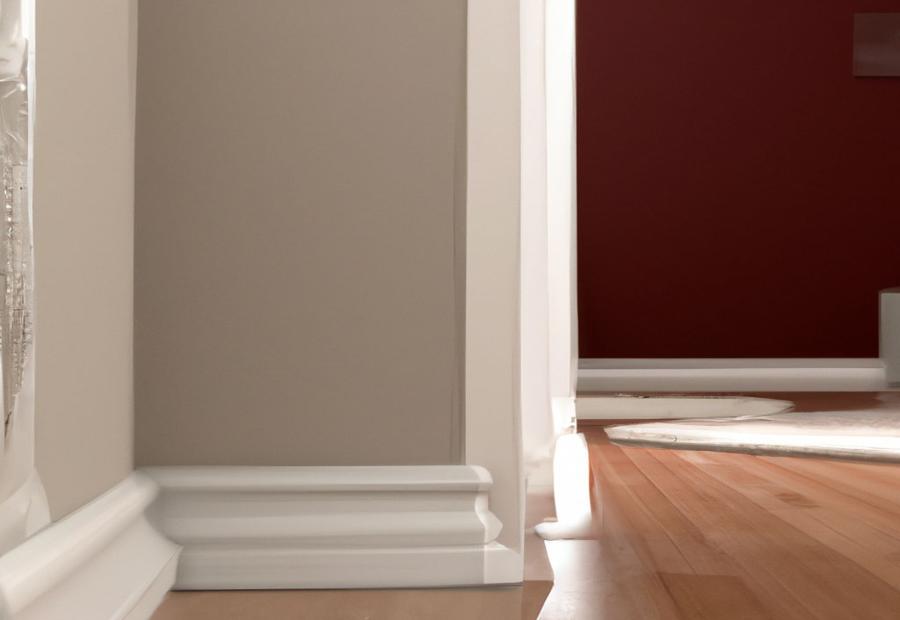


Photo Credits: Build-Wire.Com by Peter Hernandez
Skirting for homes plays a crucial role in enhancing the appearance and functionality of a space. In this section, we will explore the importance of skirting and the various benefits it brings to our homes. From protecting walls and wiring to adding a stylish finishing touch, skirting provides both practical and aesthetic advantages. So, let’s delve into the world of skirting and discover why it is an essential element for any well-designed home.
Importance of Skirting in Homes
Skirting offers many advantages for homes. It boosts aesthetics and protects walls from damage and insulation problems. It acts as a barrier, stopping dirt, dust, and pests. Plus, it hides unsightly wiring and plumbing for a tidy look.
There are different types of skirting available, each with its own set of benefits:
- Concrete skirting: It is durable and strong, able to resist harsh weather. Installation requires careful measurements and leveling.
- Brick skirting: It looks classic and provides fire resistance and natural insulation. Maintenance is needed to avoid cracks caused by shifting foundations or extreme temperatures.
- Cinder block skirting: It is cost-effective with sturdy construction and minimal maintenance.
- Vinyl skirting: It is versatile and lightweight, resistant to moisture and insects. Solid or vented panels can be chosen.
- Galvanized metal skirting: It is durable and needs cleaning to prevent corrosion.
- Hardie board skirting: It has a cement fiber composition with resistance to rotting, warping, and cracks.
- Pressure-treated pine skirting: It offers insect resistance and durability, along with longevity with maintenance and sealing.
- Lattice skirting: It adds decorative touches, requiring precise measurements and cutting.
The option of not using skirting offers cost-saving and easy access to the underfloor area. However, consider insulation issues and exposed wiring and piping.
Benefits of Skirting in Homes
Skirting in homes has many advantages.
- Firstly, it’s an eye-catching finishing touch that increases the appeal of a house.
- It also protects against dust and dirt.
- Plus, it can hide gaps or uneven surfaces.
In addition, skirting helps with insulation. It prevents drafts and heat loss, saving energy. It also reinforces walls, stops noise transmission, and may be damp-resistant.
It has been used in mansions and palaces for centuries, originally as decoration. But nowadays, it’s used to hide electrical wiring and plumbing pipes. There are many materials and styles available to fit any design. Skirting is still an important part of home construction and renovation.
Concrete Skirting
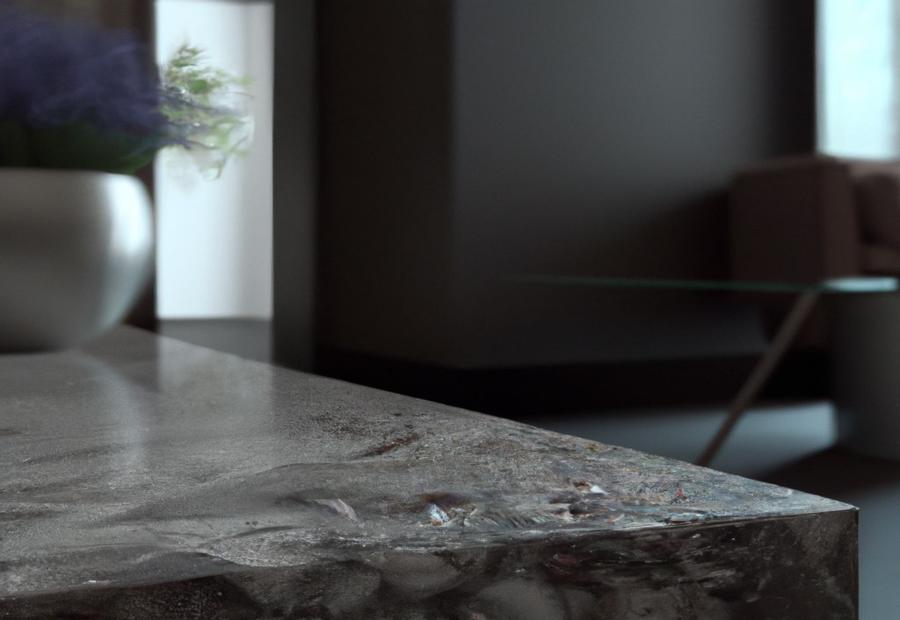


Photo Credits: Build-Wire.Com by Edward Davis
Concrete skirting is a popular choice for homeowners, offering several advantages and a straightforward installation process. Discover the benefits of concrete skirting and learn how to install it effortlessly. (Reference: Reference Data)
Advantages of Concrete Skirting
Concrete skirting offers many perks that make it a popular choice for homes. It’s super strong and sturdy, so it can handle rough weather without a problem. Plus, it’s a great barrier against pests. Here are some benefits of concrete skirting:
- Strength and Durability: Can handle heavy loads and stays strong.
- Pest Control: Solid construction prevents pests from entering.
- Weather Resistance: Rain, wind, and extreme temps won’t affect it.
- Fire Resistance: Added layer of protection against fires.
- Low Maintenance: Minimal upkeep required.
- Aesthetic Appeal: Can be customized to match home’s style.
Plus, it’s secure and sound-absorbing. When selecting concrete skirting for your house, here are a few tips:
- Hire pros: Professional installation ensures you get the most out of it.
- Inspections: Regularly check for cracks or damage and fix them ASAP.
- Drainage: Make sure water doesn’t pool near the skirting.
By following these guidelines and understanding the benefits of concrete skirting, you can make a smart decision that boosts the functionality and look of your home.
Installation Process of Concrete Skirting
Concrete skirting is a great pick for homes in need of protection. It creates a barrier around the base, stopping pests and preserving temperature. Installation requires three steps.
- Excavation: Dig a trench around the house that fits the panels width and height. Clear out any debris for a level surface.
- Panel Placement: Place each precast concrete panel around the perimeter, using mortar or adhesive to secure them. Make sure they are level and aligned.
- Finishing Touches: Paint or sealant to guard against moisture. Plus, add drainage holes or vents to promote air circulation and prevent mold or mildew.
Another option to spruce up your home and give it a fortress-like look? Brick skirting!
Brick Skirting
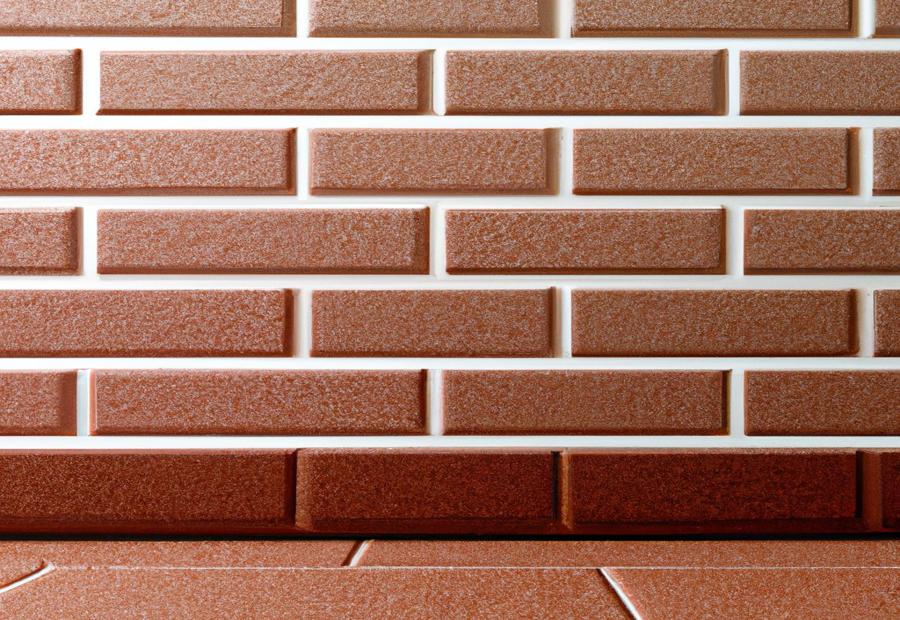


Photo Credits: Build-Wire.Com by Dylan Hernandez
Brick skirting, a popular choice for home exteriors, offers both advantages and disadvantages as well as specific maintenance requirements. Discover the pros and cons of brick skirting, and learn valuable tips to ensure its longevity and appearance. With its durability and timeless appeal, understanding these aspects of brick skirting will help homeowners make informed decisions for their homes.
Pros and Cons of Brick Skirting
Brick skirting is a popular option for homes and can bring both advantages and disadvantages. Let’s take a look at the pros and cons:
- Pros:
- Classic, timeless look.
- Highly durable & tough in harsh weather.
- Insects like termites won’t bother it.
- Cons:
- Professional installation is costly.
- Limited design options compared to other types of skirting.
- Needs regular maintenance, such as repointing.
It’s important to consider these when deciding on brick skirting. Although it looks great & is strong, you must think of the investment and upkeep.
Unique benefits not mentioned before include insulation. This helps regulate temperatures and can lower energy costs. Plus, with proper care, brick skirting can last for many years.
One homeowner chose brick skirting and shared their experience. They wanted the classic look, but were worried about the price. In the end, they decided that the durability and longevity outweighed the cost. They’re happy with the decision as the skirting gives their home a solid foundation and a nice look.
Maintenance Tips for Brick Skirting
Brick skirting has major appeal & is durable, so it’s a common choice for homeowners. To keep it in good shape, you’ll need to perform maintenance. Here are some tips:
- Clean Regularly: To prevent dirt, stains & debris from piling up, use mild detergent and a soft brush.
- Seal the Brick: Apply a high-quality sealant to protect brick skirting from moisture damage & extend its life. Follow instructions given by the manufacturer.
- Inspect for Cracks & Loose Bricks: Check brick skirting for any cracks or loose bricks. Address these issues fast to stop further damage & maintain the skirting’s integrity.
- Proper Drainage: Make sure the area around the skirting is drained well. Excess moisture can harm bricks & mortar.
- Avoid Harsh Cleaning Methods: Clean, but don’t use abrasive materials or harsh cleaning methods, as these can damage the bricks.
- Professional Inspection & Repair: If you see signs of damage or deterioration, contact a professional. They can assess the damage & suggest repairs.
Proper maintenance of brick skirting will make it look great & last longer. If you follow these tips, your skirting will stay in excellent condition for a long time.
Cinder Block Skirting
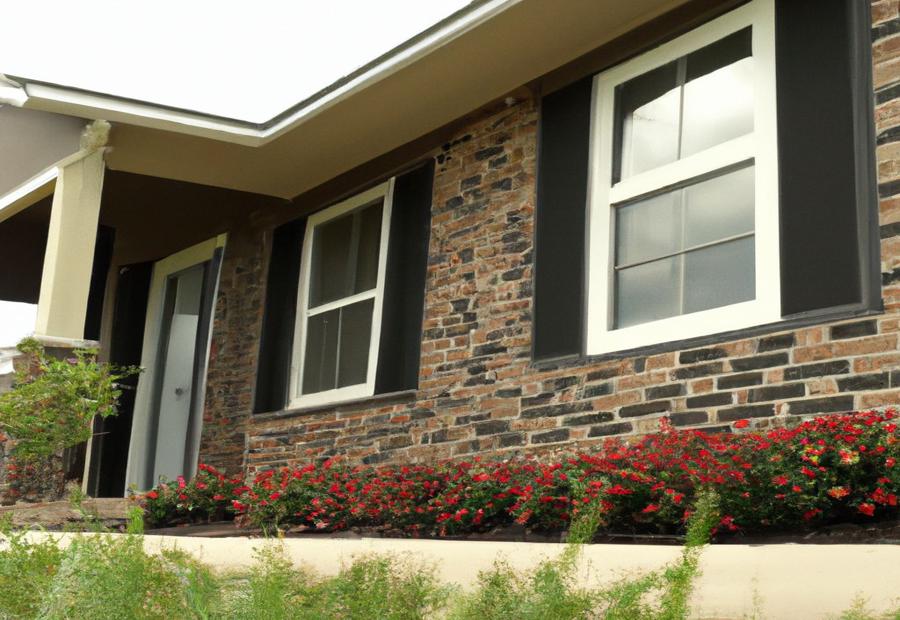


Photo Credits: Build-Wire.Com by Juan Thompson
Cinder block skirting offers a durable and cost-effective solution for your home’s foundation. Discover the distinctive features of cinder block skirting and get insights into the estimated costs involved.
Features of Cinder Block Skirting
Cinder block skirting is a popular pick for the external of dwellings. It has a few qualities that make it an ideal selection for those who own homes. These features involve:
- Sturdiness: Cinder block skirting is renowned for its strength and durability. Crafted from concrete blocks, it can hold up to harsh weather and ensure protection for the home for a long time.
- Safety: The strong construction of cinder block skirting works as a deterrent for potential burglars, making the property more secure.
- Insulation: Cinder block skirting serves as a great insulator, helping to maintain the temperature inside the house. This can help energy efficiency by cutting down on heating and cooling costs.
- Aesthetics: With a variety of design options available, cinder block skirting can improve the overall look of the home. It can be painted or finished in different textures to fit the style of the house.
Moreover, cinder block skirting is also low-maintenance compared to other materials. It needs minimum care and can endure exposure to elements without needing recurrent repairs or replacements.
Incorporating cinder block skirting into your home’s exterior design can grant lots of advantages, such as more durability, increased security, improved insulation, and attractive appeal. Its low-maintenance nature adds to its allure as a dependable option for homeowners seeking long-term solutions.
Cost Estimation for Cinder Block Skirting
Cinder Block Skirting is a favored option for homes, due to its strength and cost-effectiveness. Estimating the cost of cinder block skirting involves several factors, like the size of the area to cover, and the type of materials used.
Material cost: Cinder blocks come in different qualities and brands, and you’ll need mortar, cement, and other materials for installation.
Labor cost: If hiring a professional, labor costs depend on the complexity of the project and time taken for installation.
Additional costs: Take into account permits, equipment rental, and work such as excavation or leveling of the ground.
To get an accurate cost estimate for cinder block skirting, obtain quotes from multiple contractors. Remember to factor in any extra costs that may arise during installation.
When estimating cinder block skirting costs, consider material costs, labor costs, quotes from contractors, and any maintenance costs. Additionally, pay attention to additional expenses such as permits and equipment rental.
Cinder Block Skirting has been popular with homeowners, as it’s cost-effective and durable. Manufacturers have recently improved cinder blocks, making them even more affordable while still keeping their strength and durability. This has increased the demand for cinder block skirting as a practical and cost-effective way of improving the look and protection of homes.
Vinyl Skirting



Photo Credits: Build-Wire.Com by Ronald Campbell
Discover the world of vinyl skirting, a popular choice for homeowners. Unveiling the advantages and various options available, this section provides valuable insights for those seeking to enhance their homes with this durable and versatile skirting material.
Advantages of Vinyl Skirting
Vinyl skirting is a great choice for homeowners! It’s cost-effective and durable. Plus, it’s rot, insect, and moisture-resistant. It improves energy efficiency by providing insulation and reducing drafts. There’s a wide variety of styles and colors, so homeowners can choose an option that matches their home’s aesthetic. Plus, it’s easy to install – no need for a professional!
Cleaning and maintenance is easier with vinyl skirting than with other materials, like concrete or brick skirting. It’s also lightweight and easier to handle during installation.
I’m a contractor, and I’ve seen the benefits of vinyl skirting firsthand. Once, I worked with a family who wanted to enclose the space under their mobile home. We decided that vinyl skirting was the best option. After installation, the family noticed an immediate improvement in the appearance and insulation of their home. Vinyl skirting was the perfect solution for protecting their home and making it look great!
Different Options for Vinyl Skirting
Vinyl skirting is a great choice for homeowners who want to beautify and upgrade their homes. To make an informed decision, it helps to create a table. It can show the different types of vinyl skirting: their brand name, features, and cost.
| Type | Brand | Features | Cost |
|---|---|---|---|
| Vinyl panel skirting | (brand name) | Simple to install and looks great | (cost) |
| Vinyl lattice skirting | (brand name) | More decorative and intricate, various colors to choose from | (cost) |
It’s important to consider quality and brand when deciding on vinyl skirting. This helps homeowners get the best fit for their needs and budget.
Galvanized Metal Skirting
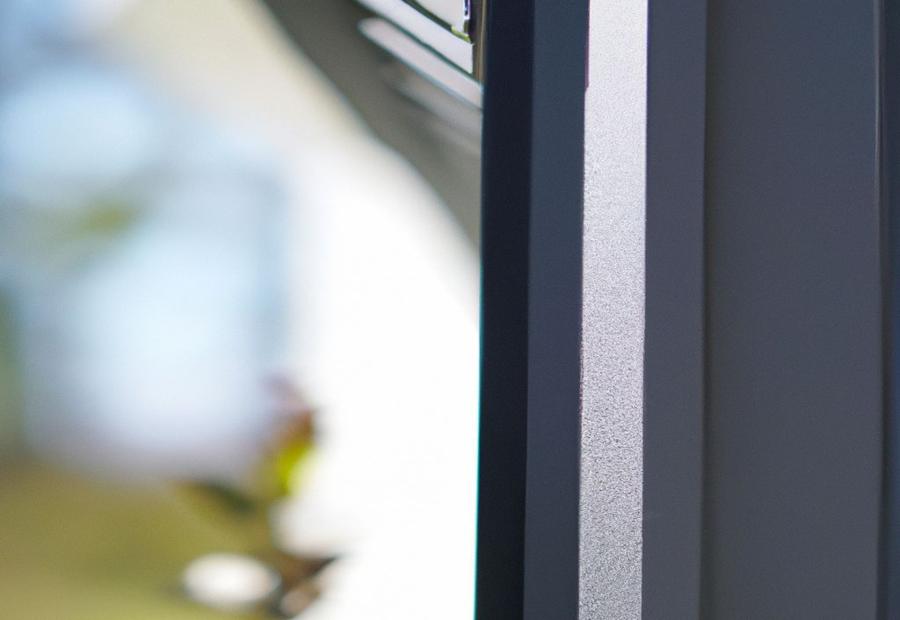


Photo Credits: Build-Wire.Com by Paul Rivera
Galvanized metal skirting offers exceptional durability and low maintenance, making it an ideal choice for your home. Discover the key advantages of this type of skirting, including its robustness and ease of upkeep. Uncover why galvanized metal skirting sets itself apart from other options, providing long-lasting protection and a sleek aesthetic.
Durability of Galvanized Metal Skirting
Galvanized metal skirting is well-known for its durability and strength. It goes through a galvanization process which involves coating it with zinc, this protects it from rust and corrosion. It’s resilient to external damage such as debris, pets, or kids playing near the house. Also, it won’t crack or warp.
It’s also low-maintenance. Unlike other skirting materials that need regular cleaning, painting, or sealing, galvanized metal skirting only needs occasional cleaning with mild soap and water. This adds to its long lifespan and durability.
For homeowners, galvanized metal skirting is an excellent choice. Its durability means it will protect and enhance the exterior of your home for years. It might take some effort, but it’s worth it to keep your skirting looking great.
Maintenance of Galvanized Metal Skirting
Galvanized metal skirting is resilient and strong for homes, due to its zinc coating. But, over time, rain and sun can cause wear and tear. To keep its look and function, regular maintenance is needed.
Clean it with mild soap and water to remove any grime. Inspect it for any damage or rust. Treat rust by scrubbing and painting with a rust-resistant primer. Keep vegetation away to prevent moisture and corrosion. Sealant can be applied to provide an extra layer of protection and to extend its lifespan.
Neglecting maintenance can lead to deterioration, so a routine plan is key for preserving the quality of your skirting. (Reference Data).
Hardie Board Skirting
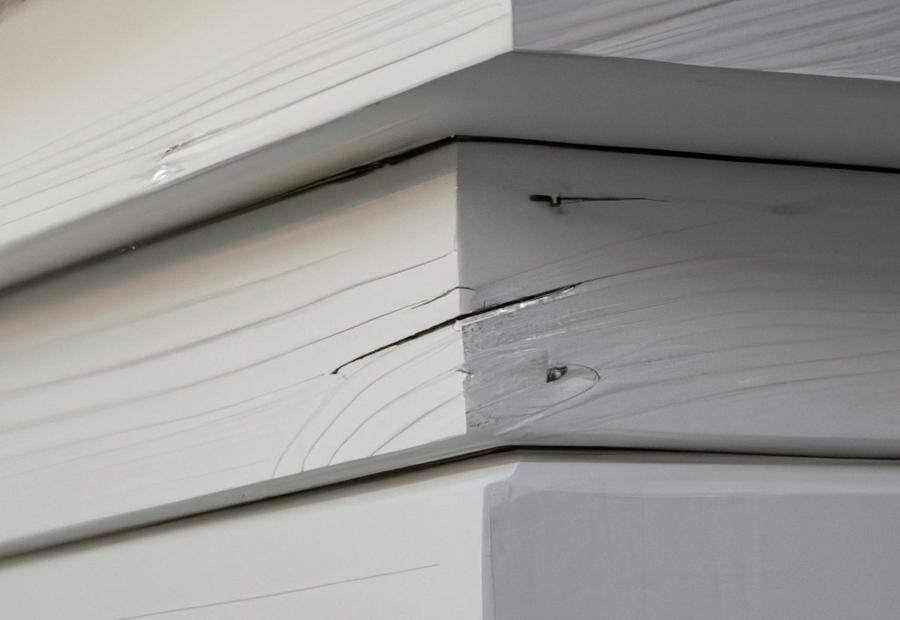


Photo Credits: Build-Wire.Com by Adam Walker
Hardie Board Skirting offers a durable and aesthetically pleasing solution for your home’s skirting needs. Discover the key features that make Hardie Board Skirting stand out and learn about the seamless installation process. From its weather-resistant properties to the stylish finishes available, Hardie Board Skirting is a top choice for homeowners seeking a high-quality and long-lasting skirting option.
Features of Hardie Board Skirting
Hardie Board Skirting is a type of skirting that offers special features. It’s durable, looks great, and requires little maintenance. It also has a unique composition that provides several advantages over other skirting options.
Benefits include:
- Durability to handle moisture, rot, and pests.
- Weather resistance against wind, rain, snow, and UV rays.
- Variety of sizes and designs for any style.
- Easy installation, great for DIY projects.
- Low maintenance, no need for painting or sealing.
Plus, Hardie Board Skirting has fire-resistant properties due to its cement fiber composition.
When choosing skirting, consider the features offered by each material. Hardie Board Skirting offers durability, weather resistance, versatility, easy installation, and low maintenance—all good reasons to choose it!
Installation Process of Hardie Board Skirting
Installing Hardie Board Skirting can be tricky! Here is a five-step guide to help you:
- Clean the area of any debris before beginning. Remove any existing skirting and make sure the surface is clean.
- Measure and mark the length you need for each section of Hardie Board Skirting. Cut the boards with a circular saw or specialized tool.
- Attach baseboards along the bottom edge of your home’s exterior walls with galvanized nails or screws. Make sure they’re level and aligned.
- Put the skirting boards in place, making sure they fit snugly. Secure them with nails or screws and maintain appropriate spacing.
- Fill any gaps with caulking or sealant. This will give a seamless appearance and prevent pests or moisture from entering.
Remember to take safety precautions when installing, like wearing goggles and gloves, plus using the right tools. Following these steps will help you successfully install Hardie Board Skirting and add style and protection to your home’s exterior. Pressure-Treated Pine Skirting: A stylish home accessory that terrifies termites!
Pressure-Treated Pine Skirting



Photo Credits: Build-Wire.Com by Anthony Sanchez
Pressure-Treated Pine Skirting offers a range of benefits and stands the test of time. Discover the advantages it brings and why it is known for its durability.
Benefits of Pressure-Treated Pine Skirting
Pressure-treated pine skirting has many perks. It’s durable, rot-resistant, and bug-proof. Plus, it can handle all sorts of weather. Structural stability is also improved, giving your home’s foundation extra integrity. And, it looks great, giving your exterior a touch of elegance. Plus, it’s cost-effective compared to other materials.
Maintenance is super low too. The treatment helps keep moisture away, so repairs and replacements are rare. Cleaning and inspecting it is easy, and re-staining or painting it is an option.
But, it’s important to consider if it fits your home’s style and budget.
Longevity of Pressure-Treated Pine Skirting
Pressure-treated pine skirting is renowned for its longevity and resilience. It’s treated with chemicals that protect against rot, decay, and termite damage, making it a great choice for homeowners.
The treatment creates a barrier that stops moisture absorption and inhibits the growth of fungi or bacteria. This ensures the wood stays strong in harsh weather and high moisture environments.
Plus, pressure-treated pine is known for its strength and ability to resist warping or cracking. Its natural oils and resins protect against moisture-related issues.
In addition, this skirting looks great. Its warm tones create a natural and rustic look that works with various home designs.
Overall, pressure-treated pine skirting is reliable and long-lasting. It’s low-maintenance and cost-effective, making it a popular choice for homeowners.
Lattice Skirting
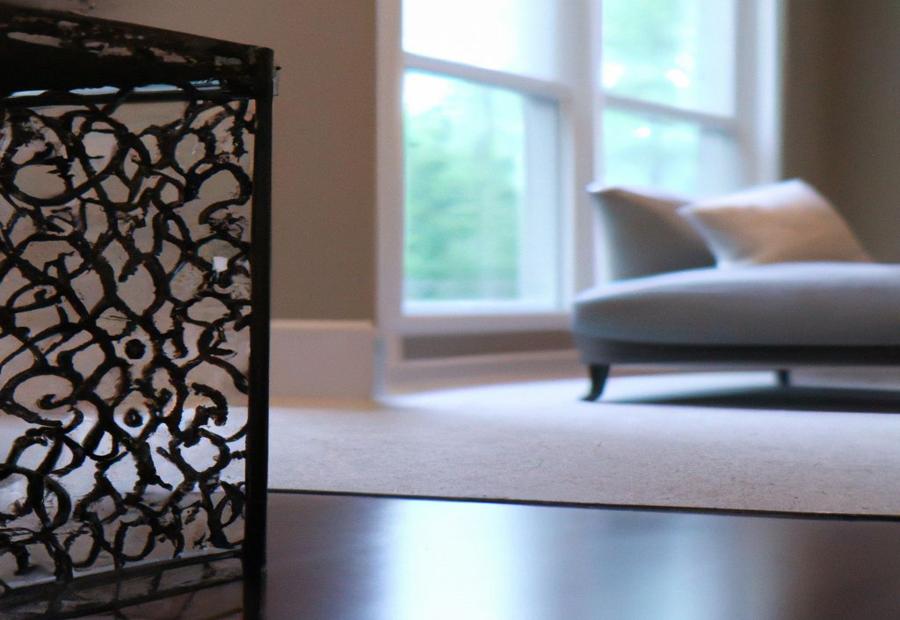


Photo Credits: Build-Wire.Com by Douglas Jackson
Lattice skirting is a game-changer for enhancing the aesthetics and functionality of your home exterior. Discover the versatility it brings to your home design, along with expert installation tips that ensure a seamless project. With lattice skirting, your home will exude charm and sophistication, while providing essential ventilation and protection. Get ready to transform your home with the stylish and practical benefits that lattice skirting has to offer.
Versatility of Lattice Skirting
Lattice skirting is a great way to give your home a unique, decorative look and practical function. It can increase your curb appeal with its intricate lattice pattern, provide ventilation in the underfloor area with its gaps, and hide any utilities like HVAC units or water heaters. Plus, it’s easy to customize with various designs and colors, and simple to install.
Moreover, lattice skirting requires less maintenance than other skirting materials. Though, it’s wise to check periodically for any damage or signs of wear and tear.
One example of the versatility of lattice skirting is Sarah who installed it around her deck’s perimeter to conceal her utility area. Not only did it give her outdoor space a stunning touch, but it also allowed for proper ventilation and easy access to her utilities. Sarah was very pleased with the results and received many compliments from guests about the transformation of her deck.
Installation Tips for Lattice Skirting
Lattice skirting is a great way to decorate the outside of your home. Here are some tips for a successful installation:
- Measure and plan. Measure the length and height of the area you’ll be installing the skirting. This will help you decide how much material and how many panels you need. Think about any obstructions or uneven surfaces that may affect the process.
- Prep the area. Make sure the ground is level and clear of any debris or vegetation. This will give you a stable base for the skirting. If needed, use a shovel or rake to level the ground and remove any grass or weeds.
- Attach framing. For a strong framework, attach pressure-treated wood or plastic lumber boards around the perimeter. Use galvanized screws or nails to secure them firmly. Ensure they’re level and plumb before continuing.
- Install lattice panels. Start at one corner and attach each panel to the framing with screws or nails. Leave a small gap between each panel to allow for expansion in different temperatures.
- Finish and maintain. Check for any loose fasteners and make adjustments if needed. Consider adding trim pieces for a neat look. Inspect and clean regularly to keep it looking its best.
Remember, lattice skirting gives you lots of design options. Consider your budget and the style you want to achieve when choosing the material and pattern.
No Skirting
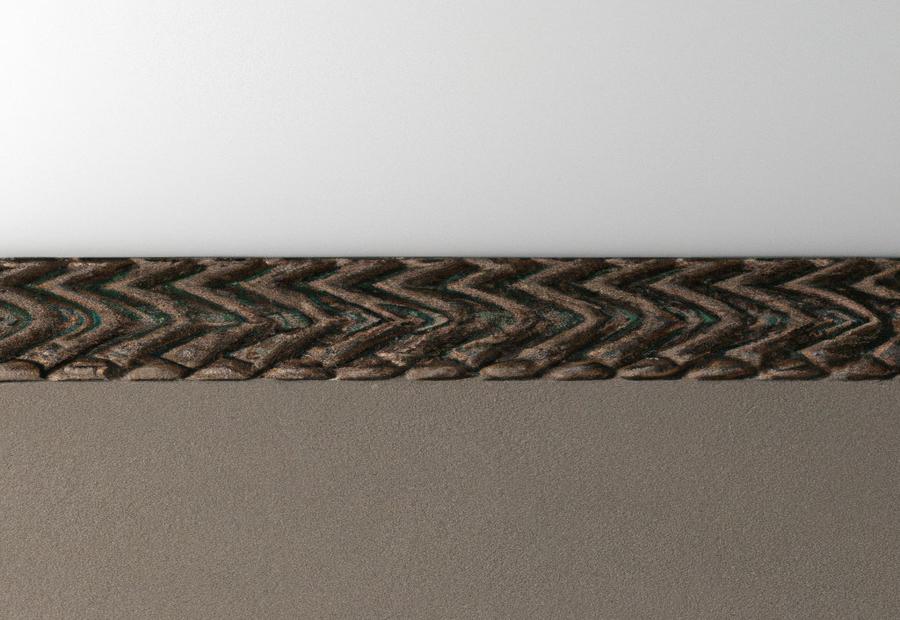


Photo Credits: Build-Wire.Com by Lawrence Clark
Explore the world of home skirting by considering the option of not using skirting at all. Discover the advantages and important considerations associated with this alternative approach to home design.
Advantages of Not Using Skirting
The advantages of not using skirting are clear! Cost savings, aesthetic appeal, and easier accessibility are just a few of the benefits. Plus, you’ll have more open space at the base of your home, which can offer storage or ventilation to reduce moisture buildup and potential pest problems.
So, why hide your home’s imperfections with skirting? Enjoy the flexibility of customizing your home to fit your needs and preferences, plus the cost savings and easy maintenance that come with not using skirting.
Considerations for Not Using Skirting
Skirting can bring many benefits to homes. But there are times when not using skirting is a better option. Considerations like the style and aesthetics of the home, budget limits, and possible maintenance needs should all be taken into account.
Style and aesthetics are key when deciding whether or not to use skirting. It can give a finished look to the home’s exterior, making it look more attractive. But, some people may prefer a modern or minimal look that does not include skirting.
Money is another factor. Skirting can be costly, depending on the material, how much is needed, and labor expenses. So, omitting skirting can help people save money.
Maintenance is another factor. Wooden or vinyl skirting may need regular repair due to rot or weather damage. If you prefer low-maintenance options, then avoiding skirting altogether can make the most sense.
Skirting can be the perfect accessory for your home. But it all comes down to budget and style!
Factors to Consider when Choosing Skirting



Photo Credits: Build-Wire.Com by Russell Hall
When it comes to choosing skirting for your home, there are several factors to consider. From budget considerations to aesthetics and style, each aspect plays a crucial role in the decision-making process. Knowing how to make these choices can help create a harmonious and visually appealing interior space. So, let’s explore the key factors to consider when selecting skirting for your home.
Budget Considerations
When choosing the right skirting for your home, budget considerations are key! Different skirting materials come with various price ranges. Estimate the overall cost of each material and any additional expenses related to installation or upkeep. Assess the long-term durability and lifespan, and think about customization options. Check if the skirting offers any energy-saving features and factor in installation costs.
Costs should not dictate your decision. Quality, aesthetics, and functionality are equally important. So, explore different skirting options within your financial parameters, keeping in mind your desired aesthetic appeal and maintenance requirements. From vinyl to concrete, you’ll have your home looking stylish!
Aesthetics and Style
Concrete skirting provides a sleek and modern look – perfect for contemporary homes. Its clean lines and smooth finish give walls a polished touch.
Brick skirting adds a timeless charm with its classic appeal. Natural textures and warm tones make it ideal for traditional and rustic designs.
Cinder block skirting brings an industrial chic vibe – popular in modern loft-style homes. Its raw and rugged appearance adds character to overall design.
Vinyl skirting is versatile with plenty of colors, patterns, and textures. It can mimic wood or stone, without the high maintenance.
Galvanized metal skirting creates a sleek contemporary style with its metallic finish. It’s a modern industrial look – popular in urban settings.
Hardie board (fiber cement) skirting is durable and can be customized with finishes like wood grain or smooth. It offers flexibility in achieving different styles, while resisting weather elements.
Pressure-treated pine skirting adds natural charm with its wood grain texture. Its warm tones make it cozy, ideal for rustic or cabin-style homes.
Lattice skirting adds a decorative touch with its various patterns. It allows for creative customization, while maintaining ventilation for crawl spaces.
When choosing skirting for your home, think budget, desired aesthetic, and compatibility with overall design theme. Each material has its own features and advantages that can enhance the aesthetics. Understanding these options helps you make an informed decision based on your preferences and style.
Make the most of your home’s aesthetics and style with the right skirting material. Choose something that complements your design preferences and enhances the overall look and feel of your space. Whether you prefer modern, traditional, or rustic, there’s a skirting option – explore the materials and styles, and transform your home into something beautiful.
Conclusion
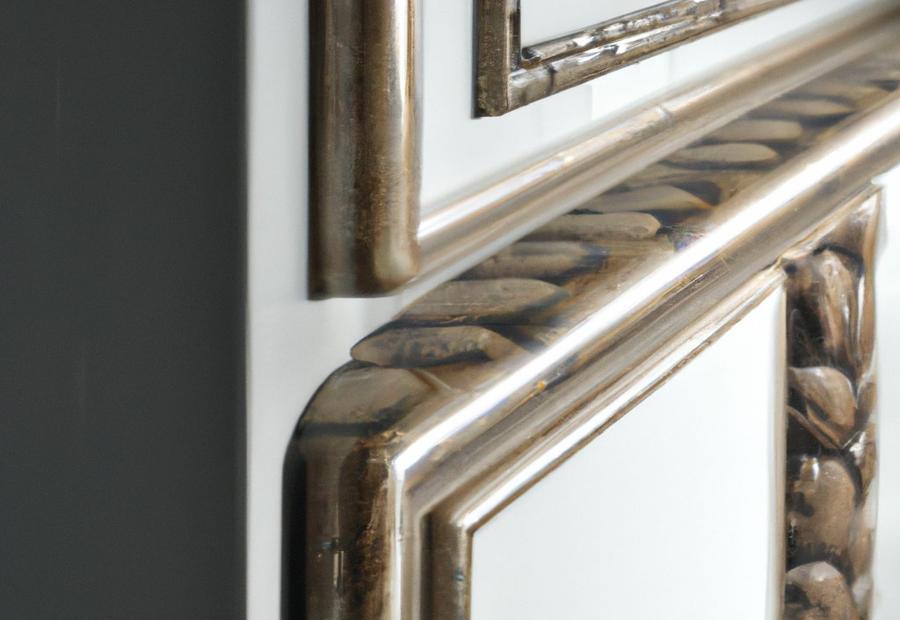


Photo Credits: Build-Wire.Com by Brandon Lopez
Skirting boards are a great way to add to the overall look of a room. There are many types to choose from, so it’s important to do your research. The data available gives useful info to help homeowners make a decision.
Timber skirting is a classic choice for traditional and rustic-style homes. It has a timeless beauty that goes with many design themes. MDF skirting is more cost-effective and can be painted any color. Meanwhile, PVC skirting is good for damp rooms and is easy to clean.
When picking skirting, consider style, durability, and maintenance. It doesn’t matter if you choose timber, MDF, or PVC – the right skirting can make all the difference. By researching the reference data, homeowners can make an informed decision that will enhance their home’s aesthetic.
Some Facts About Different Types of Skirting for your Home:
- ✅ There are nine common skirting options for homes, including concrete, brick, cinder block, vinyl, galvanized metal, Hardie board, pressure-treated pine, lattice, and no skirting. (Source: Team Research)
- ✅ Concrete skirting is not structural but helps with drainage, while brick skirting is difficult to add to existing homes and limits airflow. (Source: Team Research)
- ✅ Vinyl skirting is fast and cheap to install but can become brittle with sun exposure and be easily damaged. (Source: Team Research)
- ✅ Galvanized metal skirting has a rustic look and is long-lasting but restricts airflow and may rust or bend. (Source: Team Research)
- ✅ Pressure-treated pine skirting blends well with wood siding and allows for decent airflow, but it requires framing and regular maintenance. (Source: Team Research)
FAQs about Different Types Of Skirting For Your Home
What are the different types of skirting options for a crawl space home?
There are several skirting options for a crawl space home, including concrete, brick, cinder block, vinyl, galvanized metal, Hardie board, pressure-treated pine, lattice, and no skirting. Each option has its benefits and drawbacks, so it’s important to consider factors such as airflow, appearance, and ease of installation before making a decision. Concrete skirting aids in drainage but restricts airflow, while brick skirting looks attractive but can be difficult to add to existing homes.
What are the advantages and disadvantages of using vinyl skirting for a mobile home?
Vinyl skirting is an affordable and easy-to-install option for mobile homes. It matches vinyl siding and helps improve the appearance of the home. However, vinyl skirting can become brittle with sun exposure and is prone to damage. It is important to regularly inspect and repair any cracks or breaks to ensure its effectiveness in protecting the home.
Is faux rock skirting a durable option for mobile homes?
Yes, faux rock skirting is a sturdy option that can withstand adverse weather conditions. It provides a decorative and natural appearance for the home. This type of skirting is often made from durable and water-resistant materials, making it a great choice for long-lasting protection.
How does skirting installation impact energy consumption and bills?
Properly installed skirting plays a role in improving energy efficiency in a home. It helps create a barrier against outside elements, controlling temperature and reducing energy consumption. By preventing drafts and heat loss during the winter months, skirting can lead to lower energy bills and increased comfort within the home.
What are the benefits of using plywood skirting for a mobile home?
Plywood skirting involves creating panels underneath the mobile home, providing a solid barrier against animals and the elements. It is a cost-effective option and allows for easy customization. Additionally, plywood skirting can be insulated to further enhance energy efficiency and protect against moisture and air infiltration.
Why is proper drainage important when selecting skirting?
Drainage issues can arise if skirting doesn’t allow for proper airflow and water flow. Proper drainage is important in preventing water accumulation in the crawl space or underneath the mobile home. It helps mitigate potential damage to the foundation, plumbing works, and other structural elements. Choosing skirting options that facilitate adequate drainage can protect the home from costly repairs and potential long-term consequences.